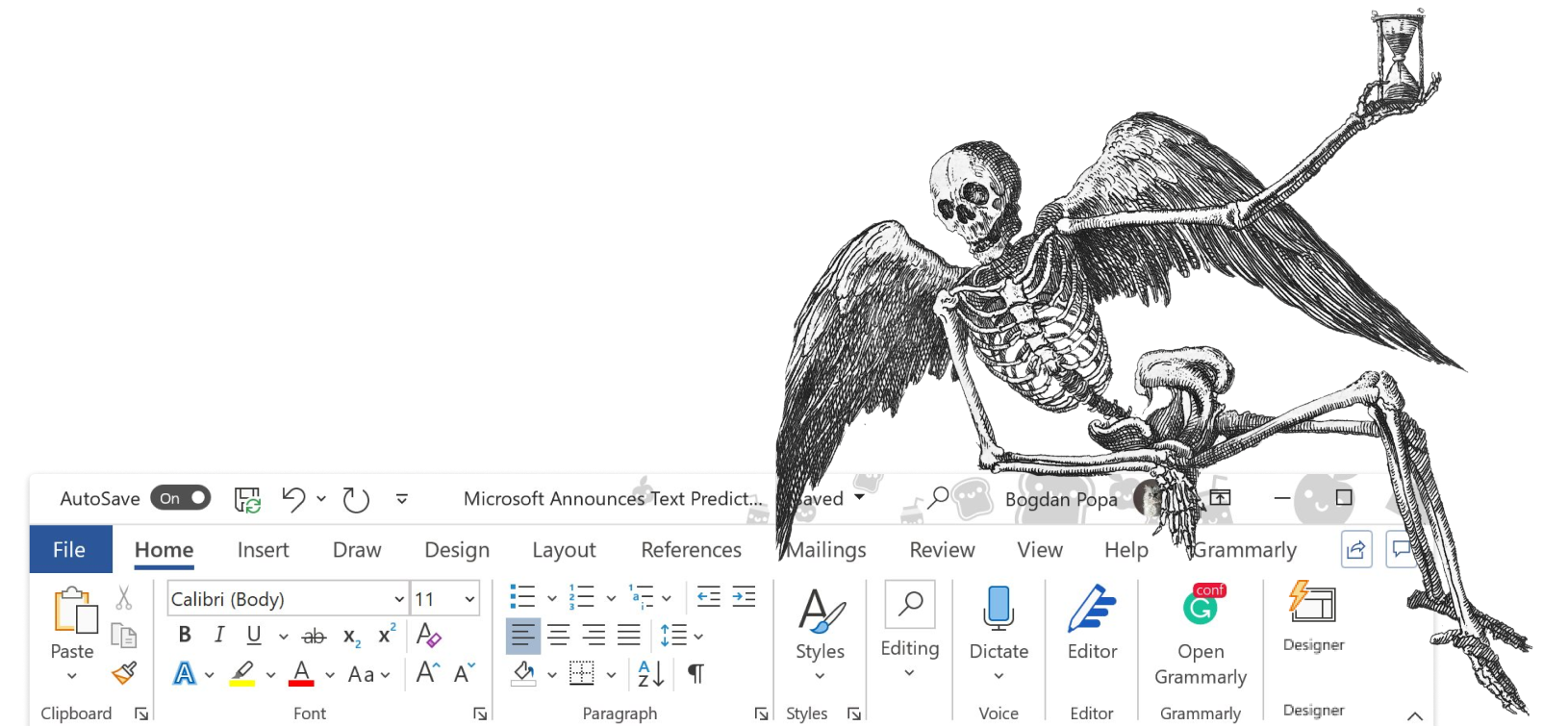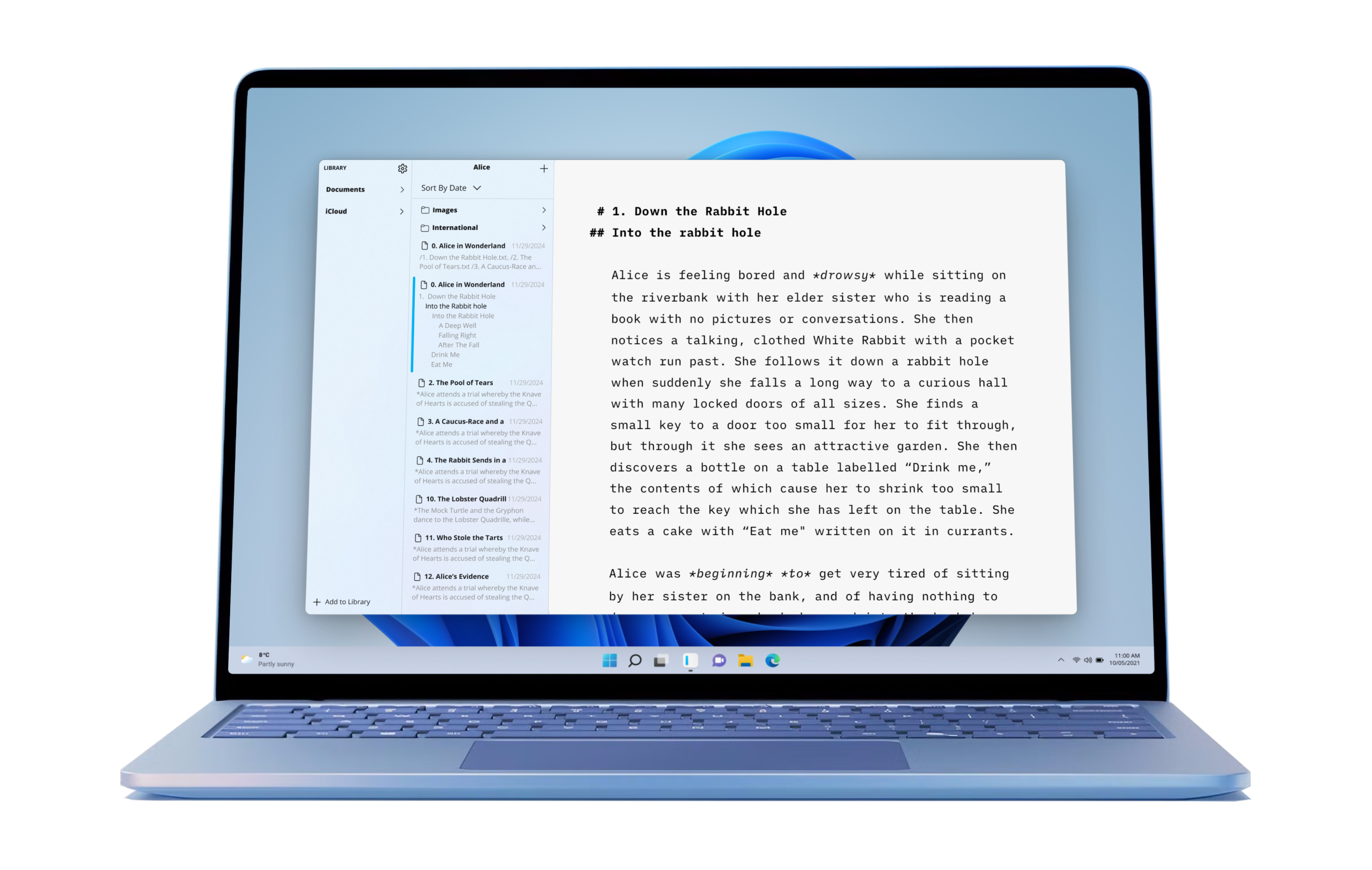Year after year, document formats like .docx, .ppt, and pdf lose a little bit of steam. You might not have noticed… But Markdown is growing over and into the old formats, slowly, and nicely, like moss on a stranded star destroyer. Notes on a revolution in slow motion.
From online tools to native apps, from GitHub to Slack to ChatGPT, bit by bit Markdown is taking over. It’s not a big deal. Hardly anyone has heard the word Markdown. But awareness has increased significantly, especially among younger professionals, students, and AI tool users. Increasingly, it shapes the way we format and share ideas. And that’s fantastic news.
By removing layers of proprietary formatting, it is gradually loosening commercial control over document standards. Most importantly, Markdown frees our thoughts while we write. Markdown helps users concentrate on content rather than appearance, promoting clarity, readability, and thoughtful writing. Qualities that are particularly important at school.
Summary
The shift from proprietary, closed formats to Markdown’s open syntax seems slow, subtle, and mostly hidden. Over time, this mostly technical matter has become surprisingly visible, tangible, and significant. Markdown changes the graphical User Interface, the economics of writing, and ultimately, writing itself. It changes not only the storage but how and what we write.
The slow shift from formats to Markdown is particularly powerful for productivity and educational apps. Emphasizing clear, structured thinking rather than visual decoration, moving from .docx to plain text slowly transforms how we communicate through computers. These are big claims on an ephemeral matter. To clarify in what ways Markdown transforms digital communication, let’s look at the history, economy, the design of traditional formats and how they compare to Markdown:
- First, we’ll look at formats (1.1) and formatting (1.2), how they are connected, and how they differ from Markdown (1.3).
- Then, we’ll review the recent history and the economy of formats (2.1). We’ll look at the evolution of Microsoft’s
.docxand how it influenced its appearance (2.2) and compare it to a simple Markdown editor (2.3). - To fully comprehend the subtle evolution of writing, we need to understand why formats were (and still are) so resilient (3.1), why it took Markdown so long to take its tiny bites out of Word’s big cake, why it is successful with a younger audience (3.2) and why we need to encourage our education system to move from
docxto plain text. - We’ll close with a subjective call for more Markdown and fewer formats.
1. The interplay between format and formatting
1.1. Format
Formats are structured rules for storing and reopening digital information—examples include .docx, .pptx, and .xls. Historically, Microsoft controlled these proprietary formats, ensuring users remained within their software ecosystem. This control was key to Microsoft’s business strategy. International pressure, especially from the EU, forced Microsoft to publish its specifications and improve interoperability.
Originally, formats like .doc, .ppt, and .xls were proprietary. Only Microsoft software could reliably open, edit, and save them without risk of loss or corruption. In the early 2000s, Microsoft introduced .docx, .pptx, and .xlsx as part of the Office Open XML (OOXML) format. These were technically documented, but not easily interoperable in practice.1
1.2 Formatting
Formatting describes the visual appearance of content: font sizes, colors, bullet points, alignment, and layouts. Software like Word and PowerPoint emphasize visual elements, often distracting users from focusing on the actual content and its meaning.
Over time, the emphasis on word processing and presentation software has shifted from content creation to an almost obsessive focus on formatting—the visual presentation of text.
This preoccupation mirrors a form of fetishism, where the superficial attributes of a document are revered, often at the expense of the substance within. Users find themselves ensnared in a cycle of selecting fonts, adjusting margins, and tweaking layouts, believing that these elements inherently enhance the quality of their work. This fixation on form over function diverts attention from the core purpose of writing: to communicate ideas clearly and effectively.
1.3 Markdown
Markdown is not a traditional file format or a visual formatting tool. Created by John Gruber and Aaron Swartz, Markdown is a simple, readable markup language designed to structure plain text effectively. Initially developed as a more user-friendly alternative to writing for the Web, Markdown uses basic characters like hashtags and asterisks to indicate headings, lists, and emphasis.
Markdown has grown increasingly popular as more applications integrate it directly. Its simplicity allows anyone to focus purely on writing clear, structured content.
Markdown is intended to be as easy-to-read and easy-to-write as is feasible.
Readability, however, is emphasized above all else. A Markdown-formatted document should be publishable as-is, as plain text, without looking like it’s been marked up with tags or formatting instructions. 2
Strictly speaking, Markdown is neither a format nor is it formatting. It’s a syntax for indicating structure (headings, lists, emphasis) in plain text. Some apps use it as a format. They partially or fully hide markup and interpret it visually. Fully hiding or using Markdown as a one-way street undermines it.3 It was not designed to be applied behind the scenes, as it’s not ideal for parsing: to stay readable it doesn’t use easily identifiable opening and closing tags, that support technical parsing.
2. The business of controlled formats
2.1 History
It’s worth noting that Microsoft bought PowerPoint, GitHub, LinkedIn, and many other things—but it did in fact create Word and Excel.4 Microsoft is, in essence, a sales company. It’s not too great at designing software. Microsoft strategically enforced its formats through the control over the Windows platform as the de facto standard for productivity apps.
Formats were a core part of its business strategy. The way they used formats to control the way we write may now seem utterly bizarre. At the time it worked like a perfectly oiled machine. Microsoft continuously altered their formats to enforce paid updates and maintain control over the productivity software market. The connection between format and formatting was one of the main factors of its technical gatekeeping. They continuously added formatting features and correspondingly the format was updated. If you wanted to be able to read or share a document with the latest formatting, you needed their latest format—available for another few hundred bucks. For almost three decades they controlled the way we wrote.
Word has layout capabilities, it’s widely understood and marketed as a word processor. Technically, it is geared towards formatting and layouting. And yet, professional journalists, professors, and even poets that don’t care much about fonts, dropcaps and margins, were forced to using it. Not because it’s the best app for writing. Because the university, the editor in chief, the book publisher offers and expects the .docx format. For the most part, the back-and-forth between writer and editor still goes through Word’s Track Changes feature.
2.2 The Evolution of Word
With every update, the focus shifted further away from writing and toward formatting. Using Word, you come to think that writing means choosing fonts. From the beginning, Word uses a proportional, finished font. Instead of thinking about what to say, users were trained to concentrate on how it looks.
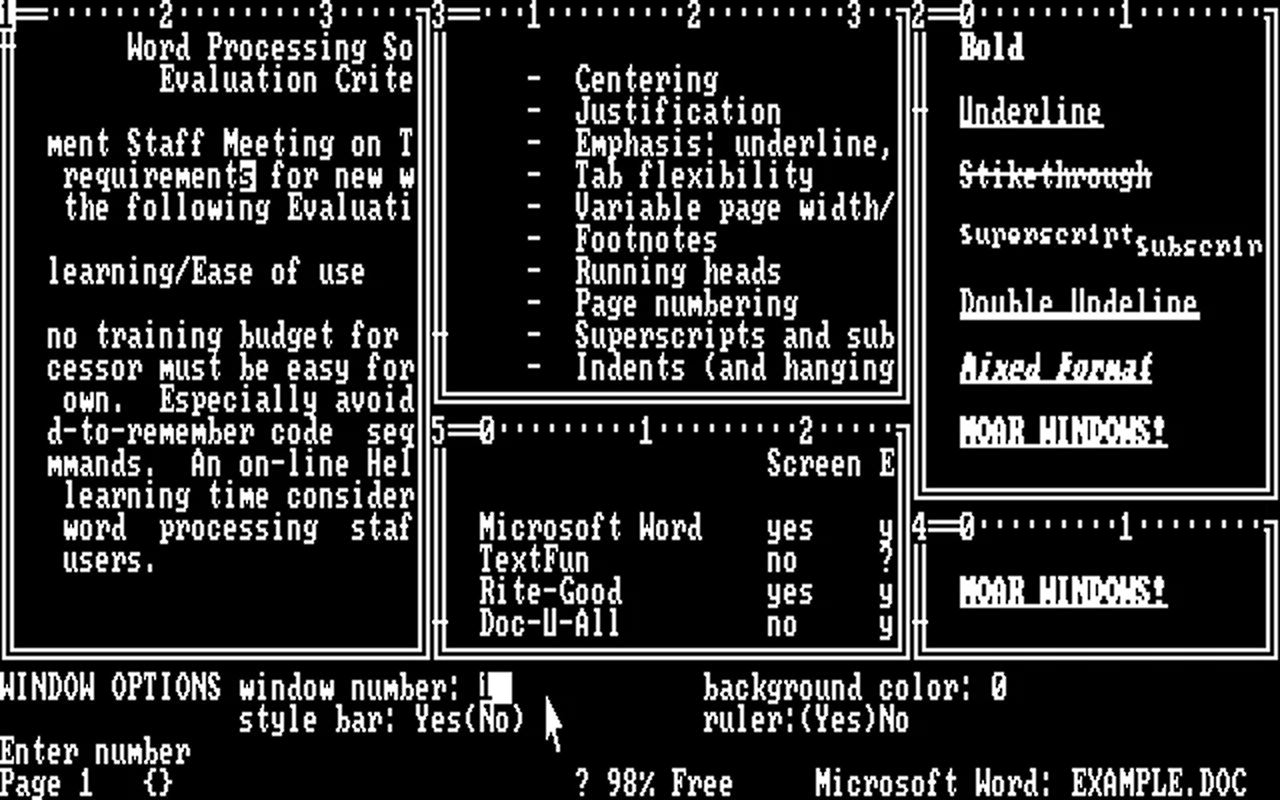
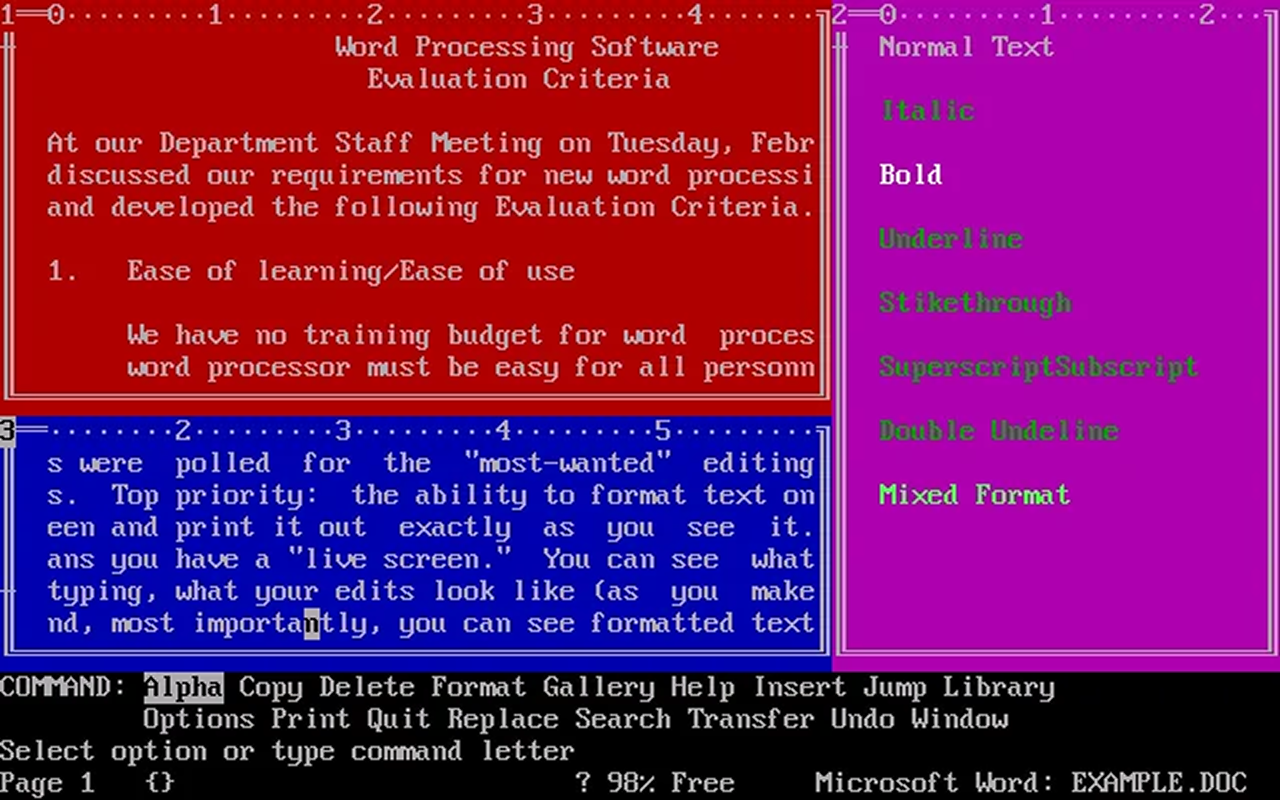
From its very first version, Word focused on formatting. With the limited space of an 80’s monitor, they figured that they needed to find a way to make space for multi-windows, rulers, and formatting features like underline, strike-though, and bold. That they managed to have multiple windows with rulers is sort of impressive, given the limited amount of pixels at the time.5
Likely, this is how developers saw writing at the time. “Putting words in fancy fonts and make them bold and stuff.” As a professional writer, you probably don’t care much about bold, italics, and underline, while you write. You care about sentence, paragraph, chapter, and outline. Not in a graphic way, but from a grammatical, semantic, and rhetoric perspective.
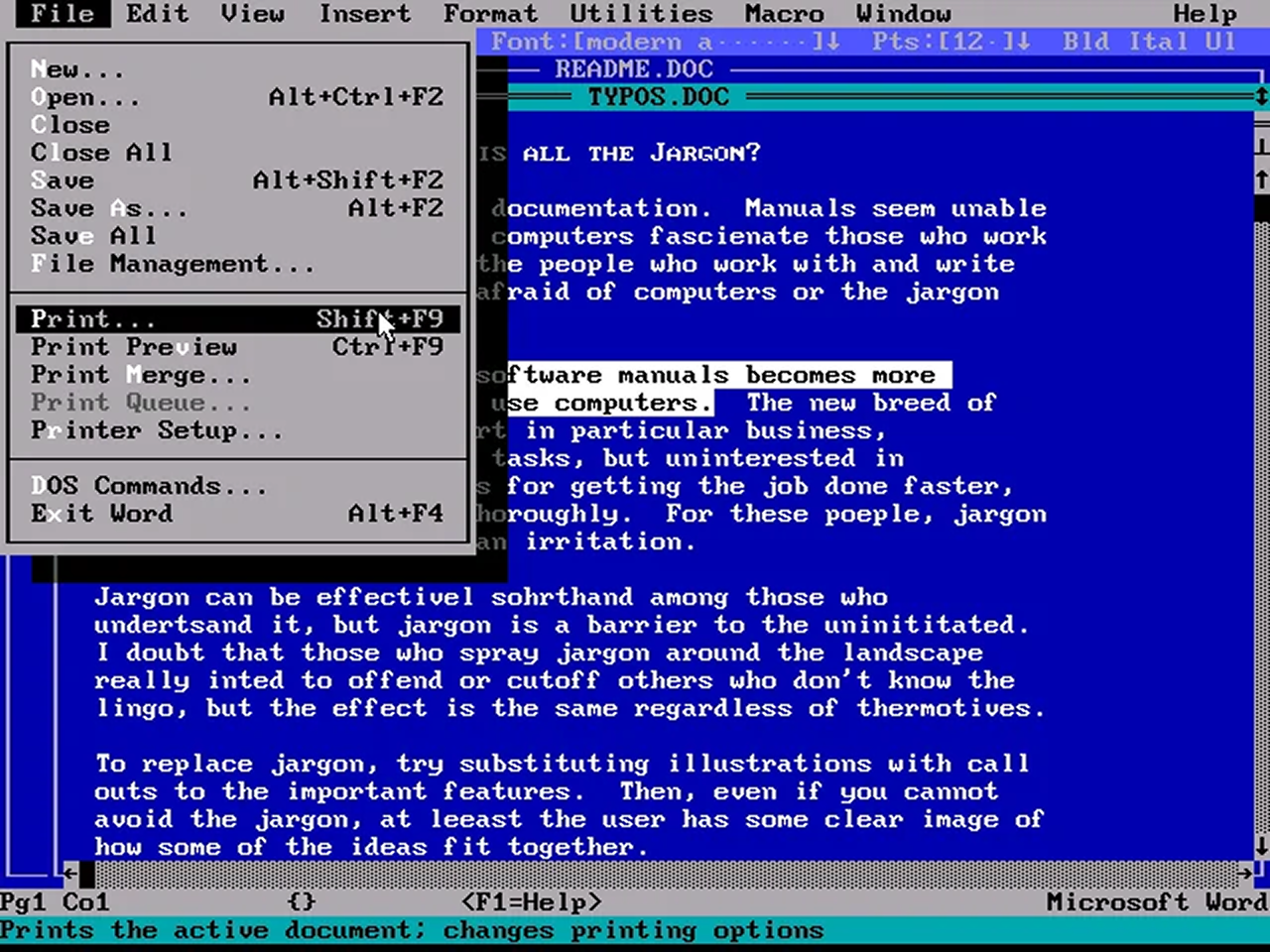
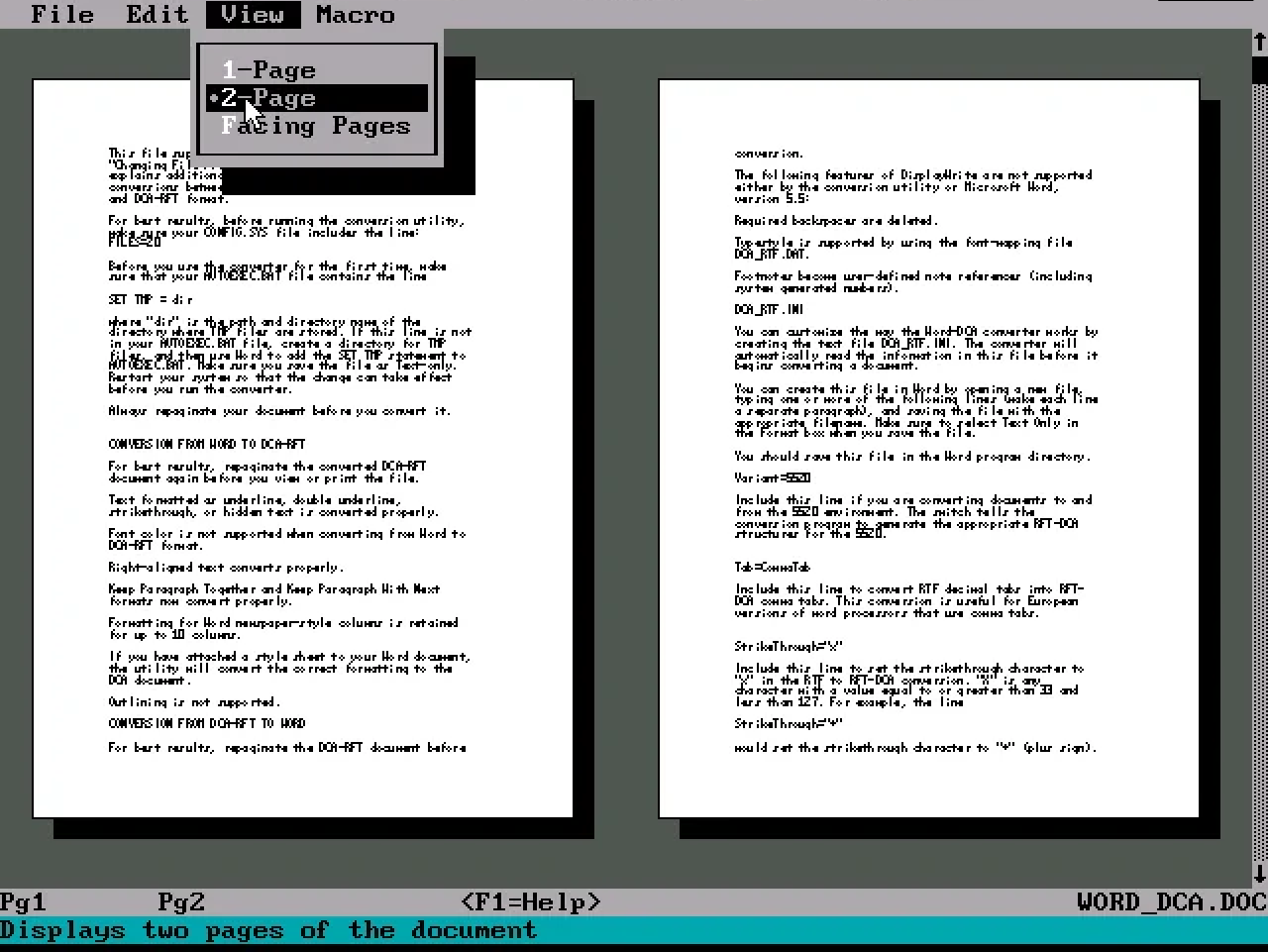
The introduction of menus freed some space for writing. It didn’t take long for Microsoft to start populating that space with stuff. A damn shame. Developers should have observed and trusted how they write code. An efficient Word processor shares more characteristics with an IDE than with a layout program.
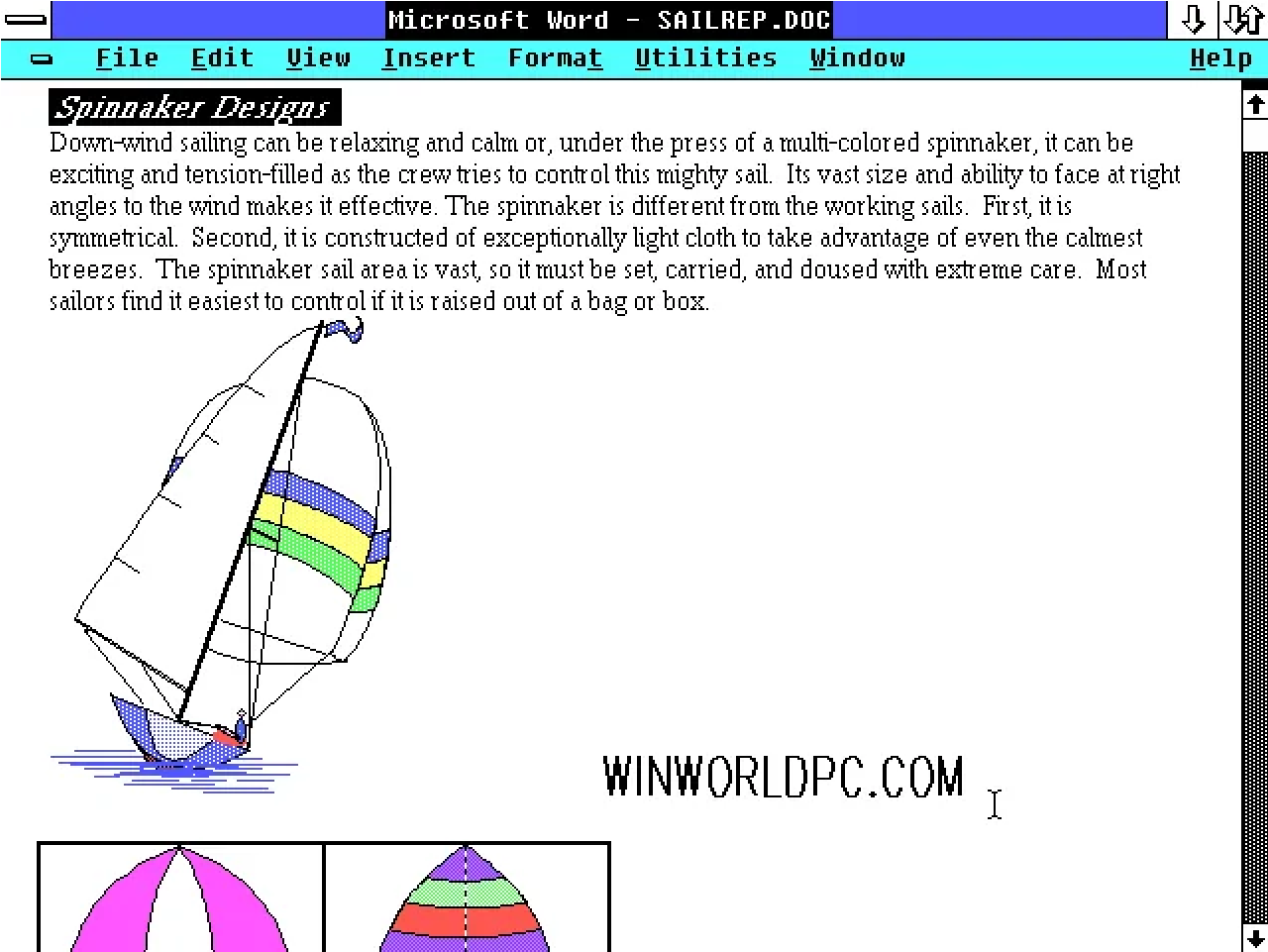
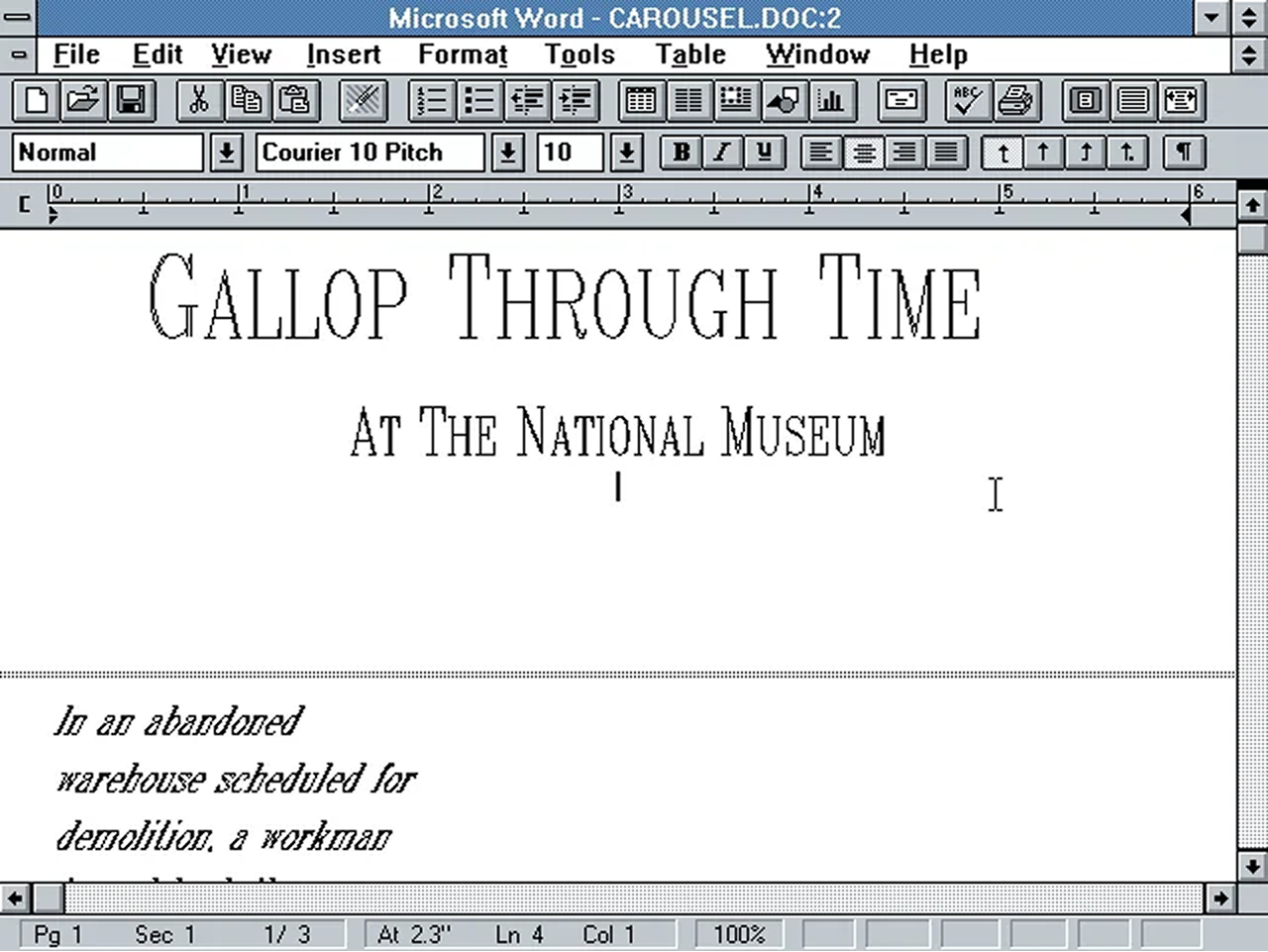
As soon as they could, pictures were added to the editor. Few things are as distracting when you write than colorful pictures. Choosing, editing, and placing the pictures requires talents that don’t have much in common with the talents of a typical writer.
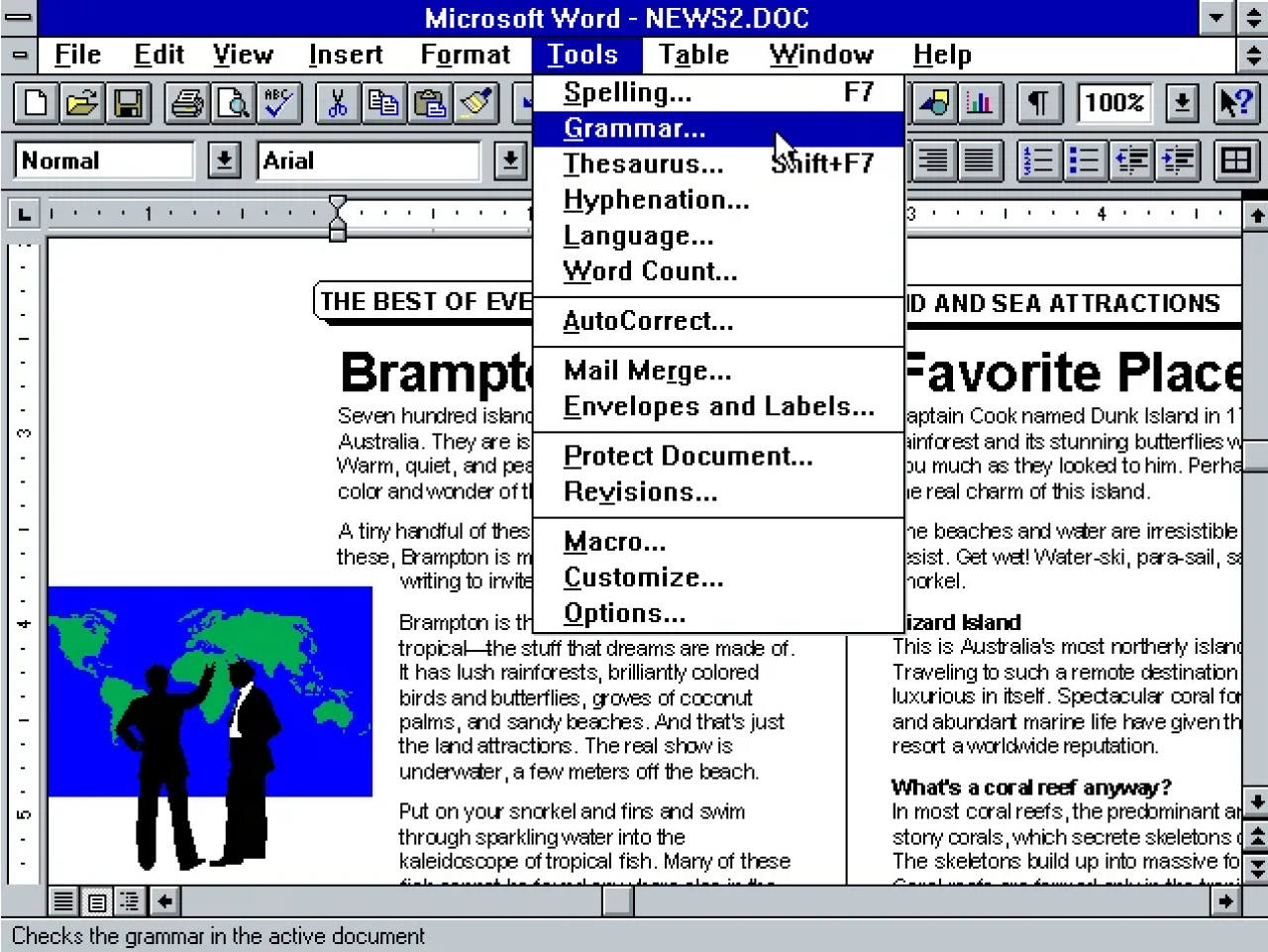
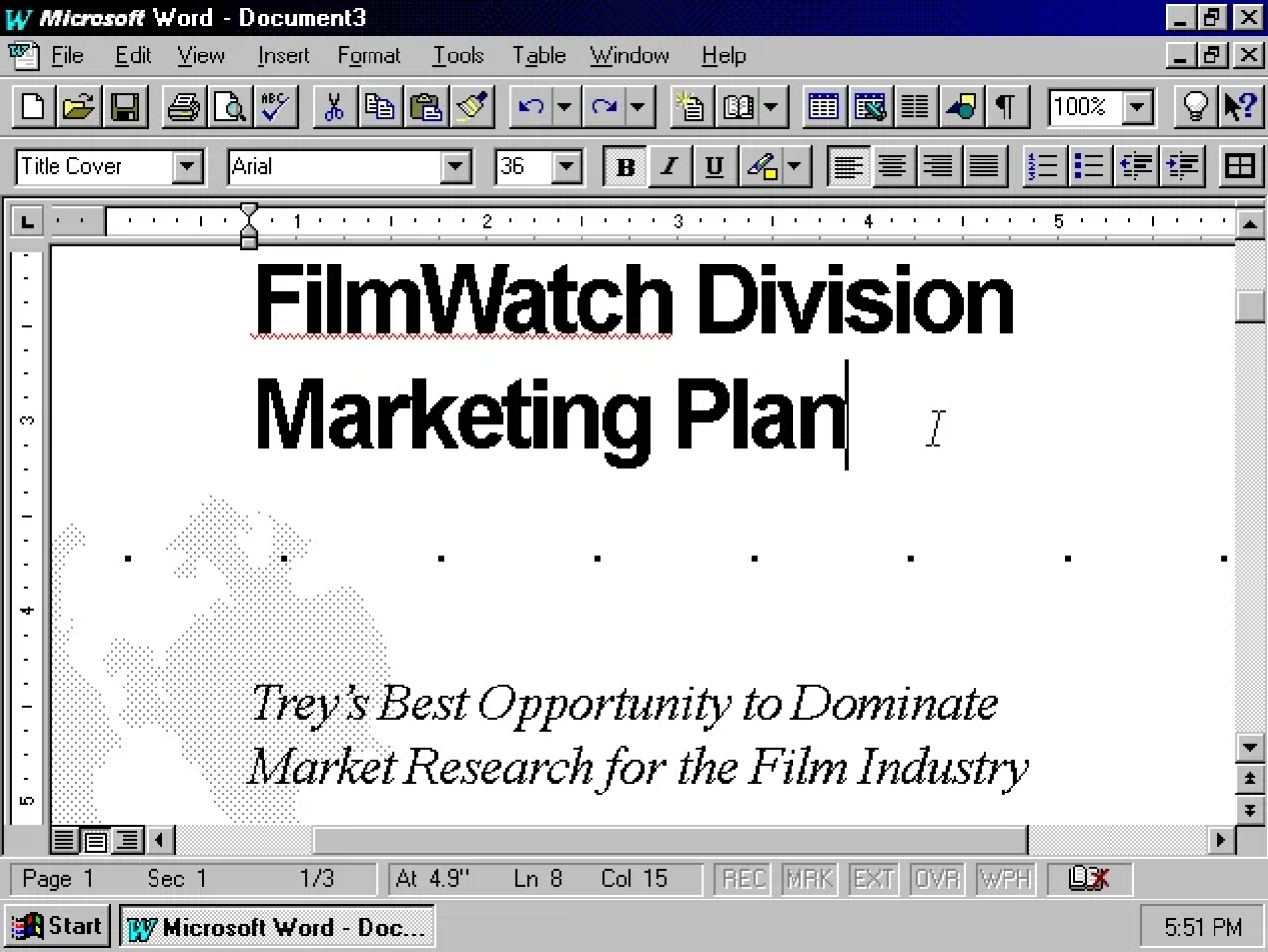
Word found its basic shape around 1990, and since then it kept adding graphical UI and formatting elements around the text. It’s interesting how, for decades, hardly anyone noticed that instead of a word processor, we used a second-class layout app.

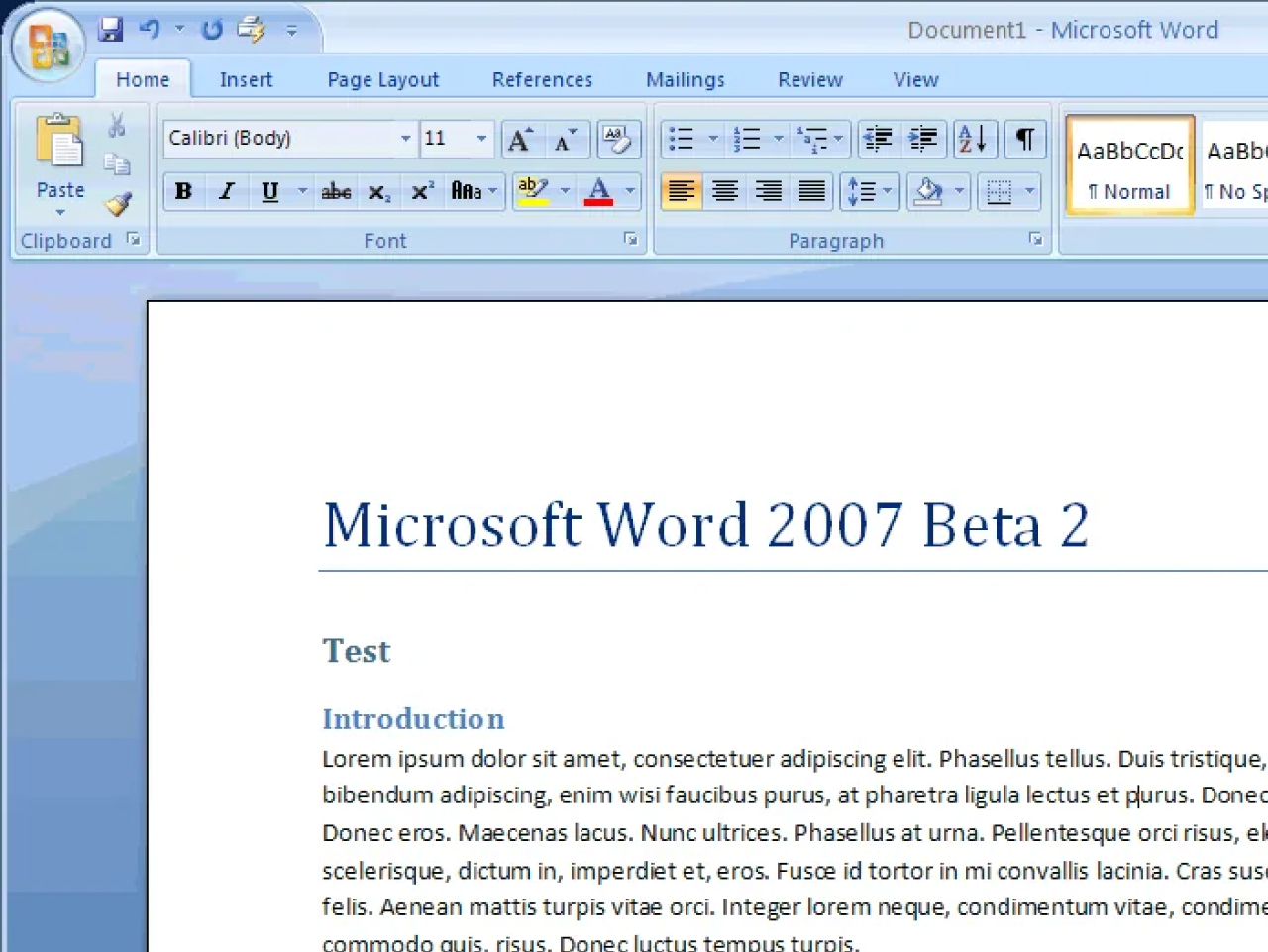
Word is geared toward making office workers use their time with bad design decisions. As the screen became bigger they added more and more useless garbage around the text. Buttons, Rulers, Chatbots, and, now AI design assistants.
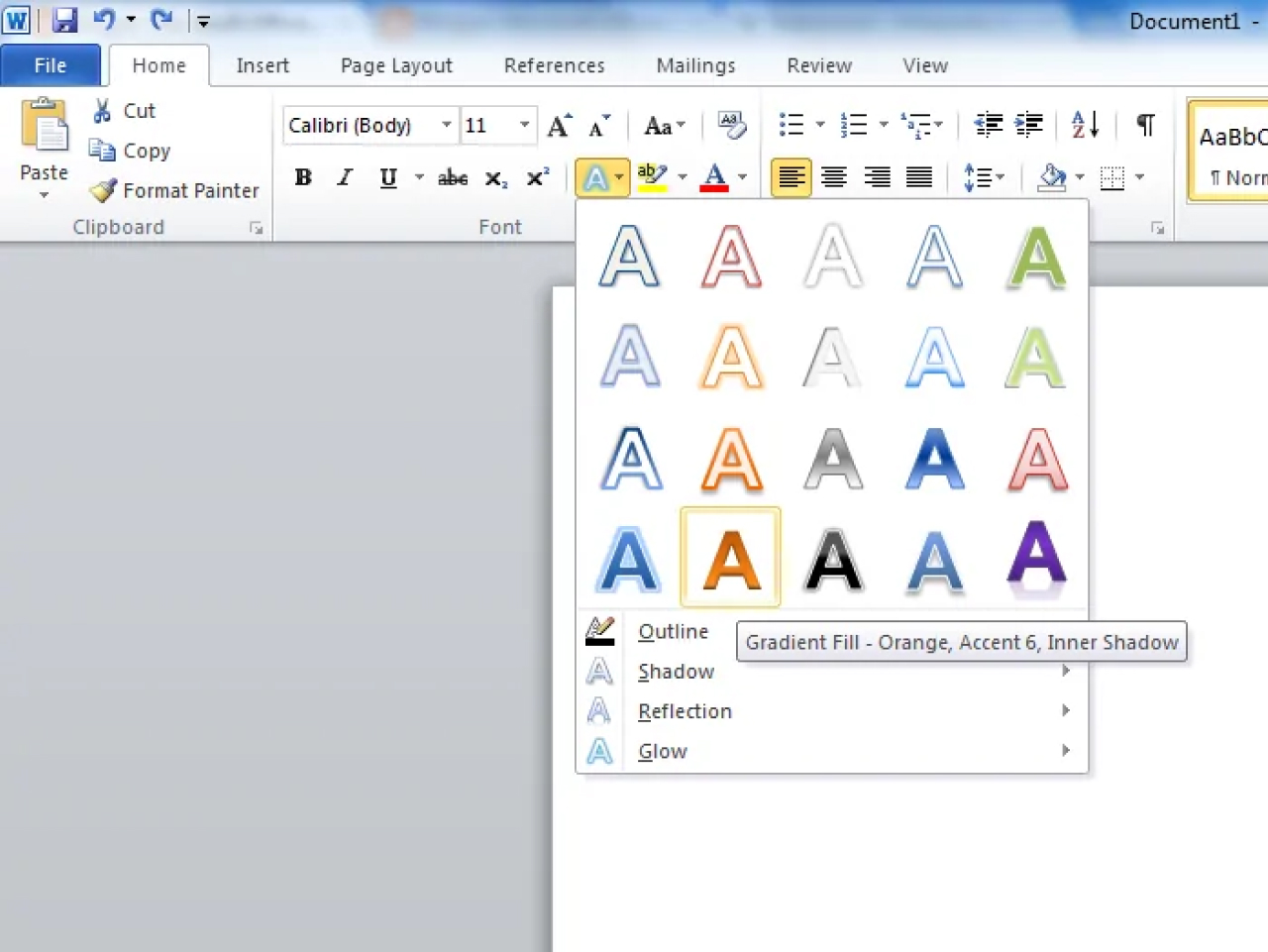
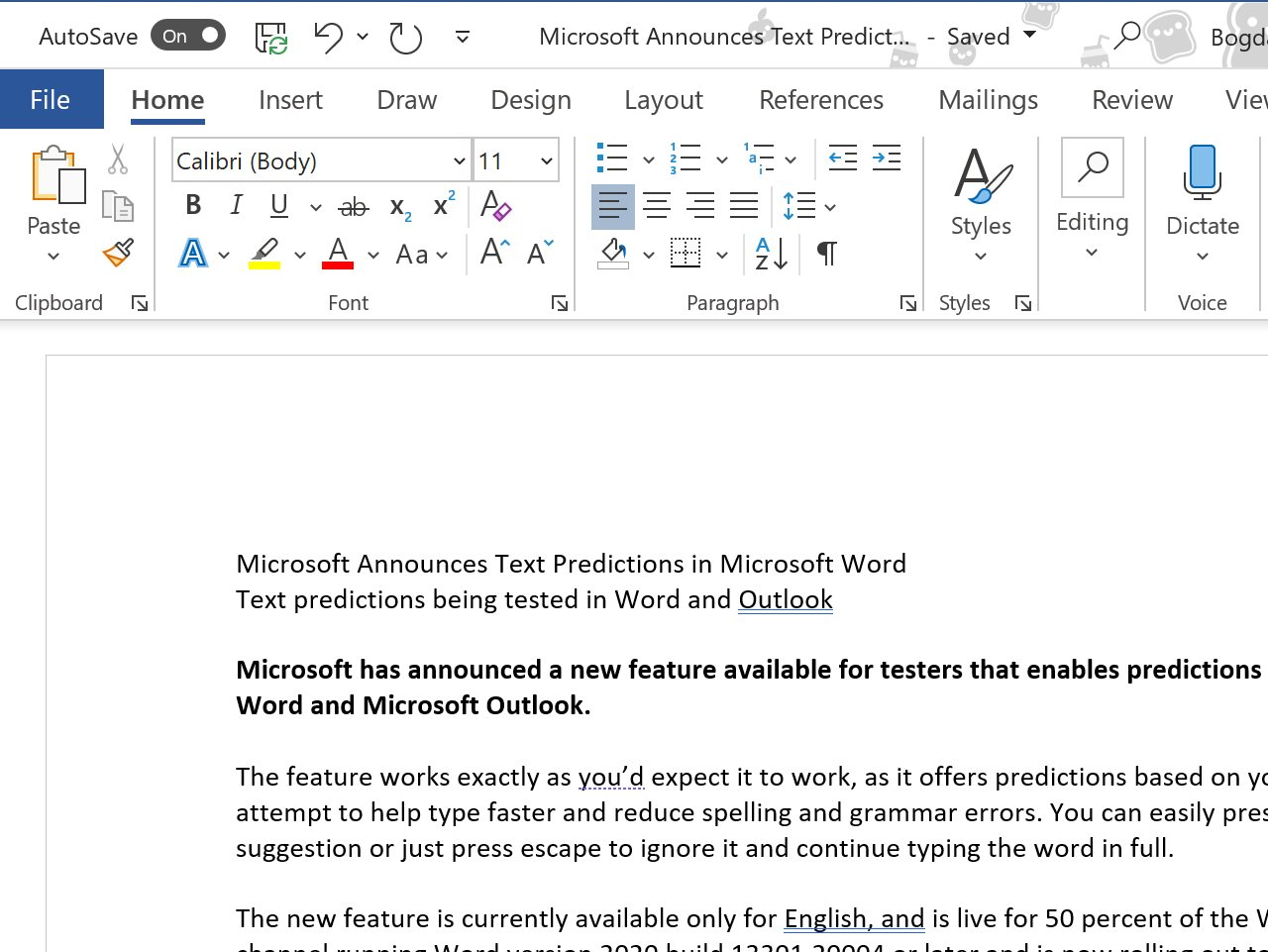
Few are aware of .docx architecture, and hardly anyone really cares, but to understand a format and its effect we need to look below the surface. Here is what you get when you unzip a .docx document with the words “Hello World”:
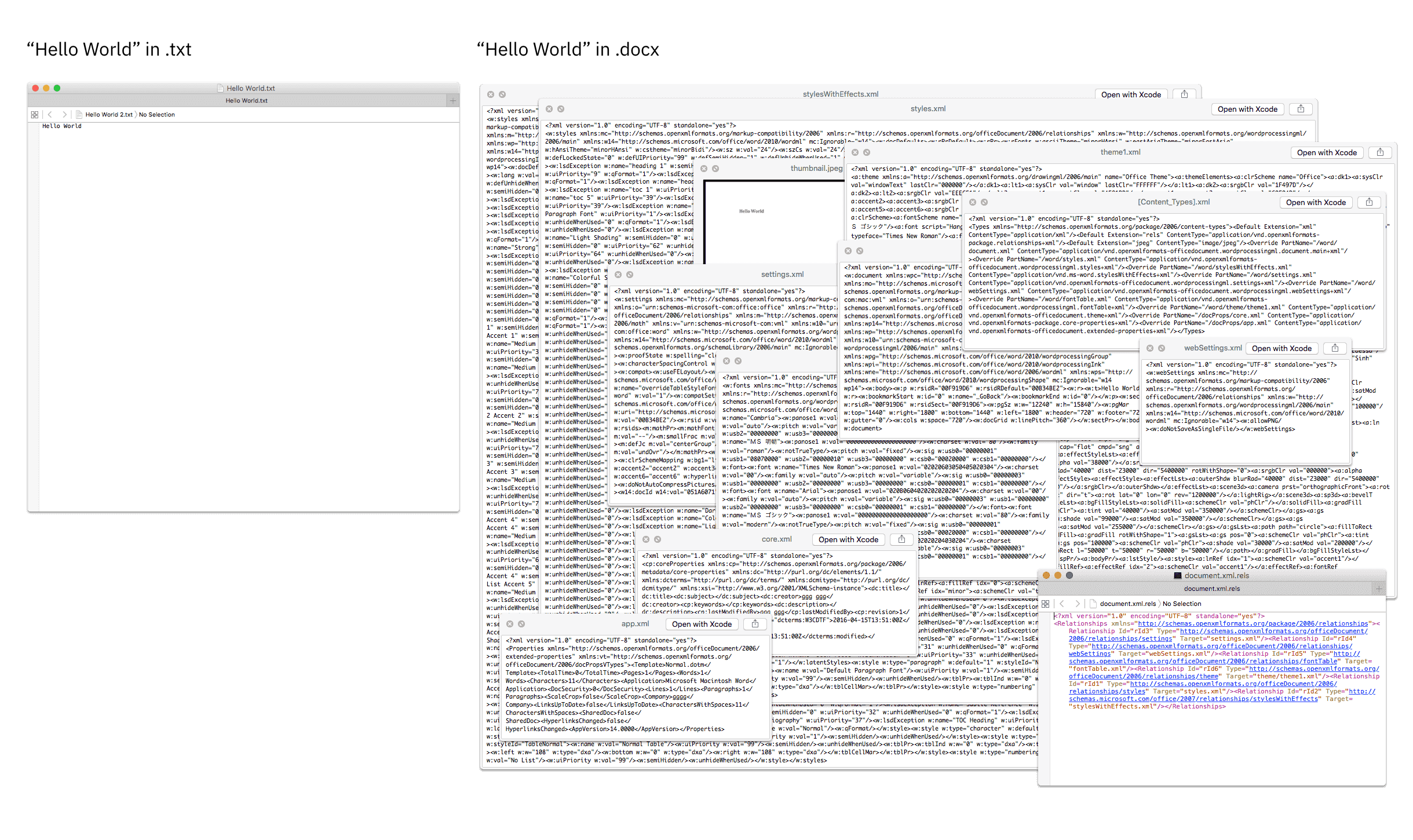
Who cares? Who cares how complicated a car engine is, as long the car works? Well, that the car doesn’t work. Data corruption, bugs, and slowness have a lot to do with a bad data structure. In theory, you might not care about the technical architecture behind writing formats. But as a user you will feel their effect.
Though largely hidden, an overly complicated data structure creates all kinds of friction. The growing complexity of over-formatted data has driven a constant growth of design complexity and an explosion of graphical user interface elements. Each new version of the software added more features, making the app harder to understand, heavier, buggier, slower, and less and less compatible.
2.3 The evolution of a Markdown app
For comparison, a quick look at the evolution of the UI of our Markdown-based writing app, iA Writer. While it has gained more features over the past 15 years, its design remains focused on maximizing space for the text.
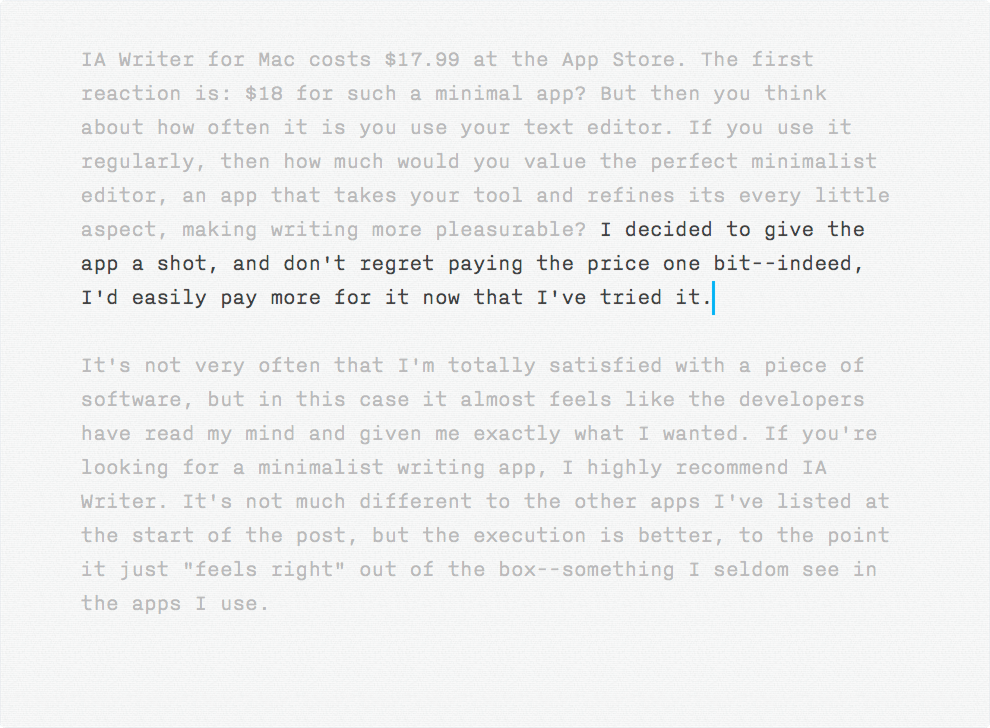
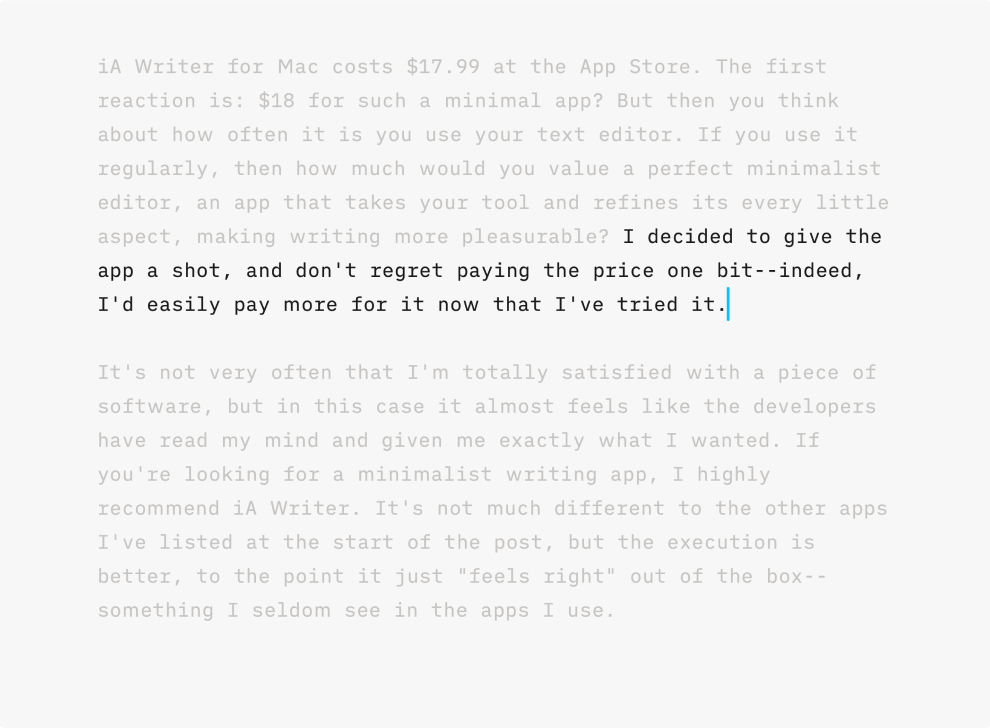
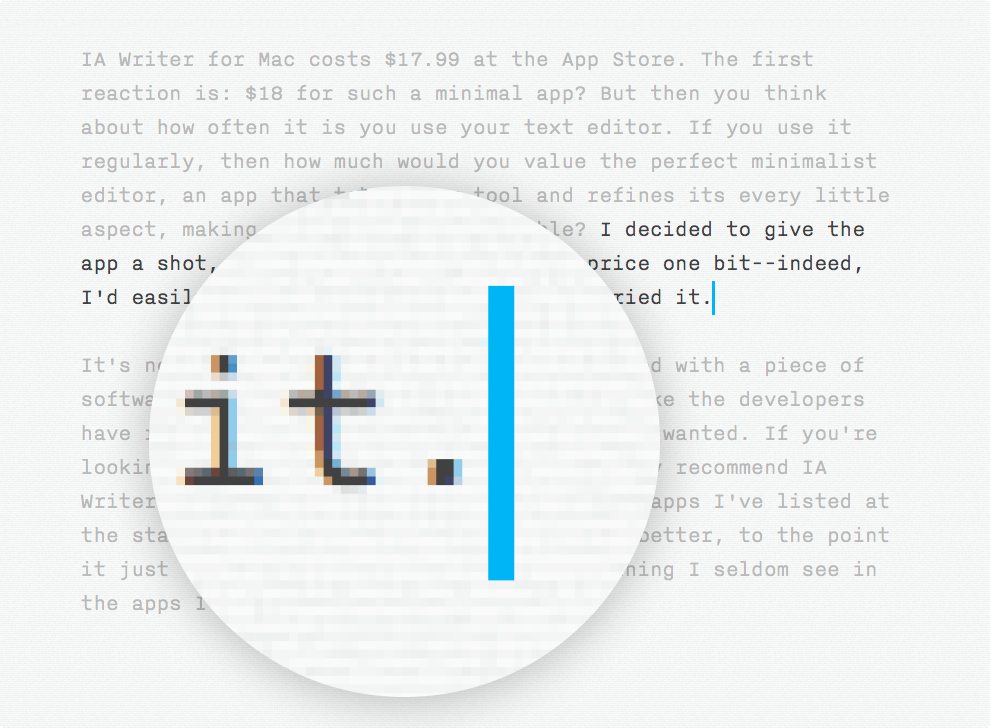
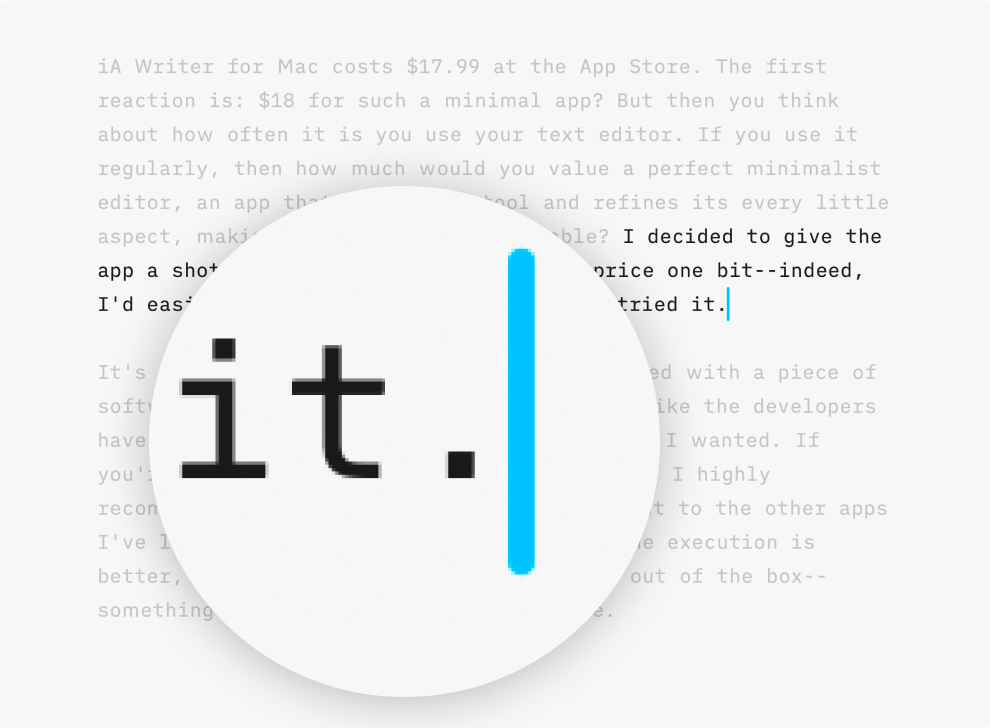
iA Writer was able to stay the way it is because of Markdown. By not hiding it, we resisted turning it into a format. It’s highly tempting to use Markdown as a format because mobile devices are now fast enough to parse it in real time. Markdown’s inventor, also a user of iA Writer for many years, opposes this step.
Things does Markdown right. It doesn’t hide the Markdown formatting characters, it just styles them. Effectively, the notes field for tasks in Things is still just plain text. It’s just styled nicely if you write that plain text in Markdown. That’s the right way to do Markdown. Don’t hide the formatting characters; just style/color them.6
We fundamentally disagree with Gruber in his take on the EU, but we seem to be one heart and one soul when it comes to how Markdown should be displayed:
iA Writer is just beautiful. To me, it’s the gold standard for Markdown syntax styling — great colors, real italic and bold styling for italic and bold spans, and, my very favorite touch, outdented #’s for headings.7
Today’s obsession with formatting, the omnipresent productivity theater, and bloated user interfaces are the legacy of Microsoft’s strategic control over document formats. It paid off handsomely for the company—but at the cost of cluttered software and billions of distracted, poorly designed documents that no one wants to read.
3. A revolution in slow motion
3.1 Why commercial formats lasted so long
Everyone still uses Microsoft products—not because they work particularly well. But because we do not have a choice. Word and Office are forced upon us at school, at work, and because their format was expected. Microsoft’s control was total and has just started to soften a little bit, as of late.
Microsoft’s dominance is complete. You can see it in search engines. When people look for writing apps, they search for Word or Office. For most, those names are synonymous with “writing.” Many don’t even know alternatives exist—or how much better they can be.
Trying to reach those users is nearly impossible. Microsoft owns the keywords, the SEO, and the domain names. Competing for visibility becomes a losing battle: they outbid, outrank, and overshadow anyone offering an alternative.
Because Microsoft’s formats were so dominant, every competing product had to offer a degree of compatibility with Microsoft’s half-open formats. You can open .docx in Pages and Google Docs. You can open .ppt in Keynote and Google Slides, and a lot of Markdown apps offer some form of import and export. If you’re incompatible with Office you’re still fighting an uphill battle.
Luckily, those expectations are starting to change. But for almost three decades, the single format of a single company became the arbitrator of how we wrote most of our work. And that format made you focus on visual decisions: margins, line heights, font colors, etc. Over time, .doc (and later .docx) made us conflate content quality with appearance. As a result, documents are judged by how they look rather than what they say. The obsession with formatting was great for Microsoft. Everyone else drew the short straw.
- Word and PowerPoint locked us and everybody into buying the latest versions: because only the latest version will save and display our document reliably.
- Visual formats made us write badly, nudging us into prioritizing surface over structure, appearance over meaning, and wasting billions of hours on formatting instead of thinking about what we wanted to say.
- Commercial formats shaped how we perceive, think, and communicate at the screen: Over time, visual polish became more important than conceptual clarity.
And while they always made us feel uncomfortable, we all resigned to using them because they seemed normal. But like smoking on planes, they were never a rational norm. Office products were and are suffocating. They’re buggy, slow, and produce a uniform, predictable outcome.8
3.2 A quiet, cool, slow revolution
Over the years, the format used in writing apps started to change from proprietary .docx to .pages and .pdf to the innocuous syntax called Markdown. Outside the tech field, few are familiar with its name, and yet more and more people use it unknowingly.9
Today, Slack, Discord, WhatsApp, Google Chat, Teams, and Trello, among others, use Markdown syntax, at least partially. Seeing weird characters when you copy-paste from AI? That’s because ChatGPT, Claude, Gemini, DeepSeek, and others use Markdown to format their responses. GitHub, Reddit, and similar tech-oriented sites have been using their own Markdown flavors for years now.

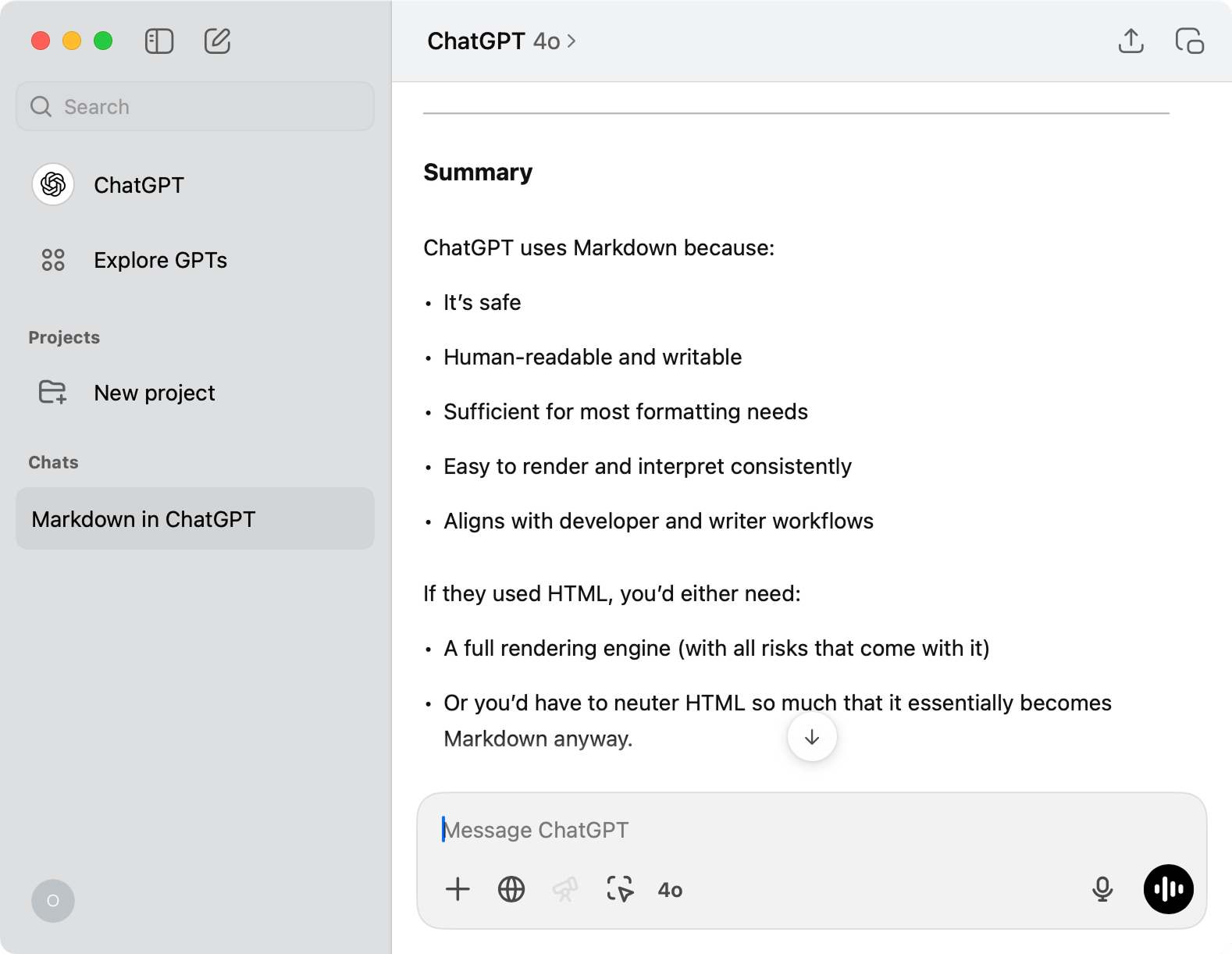
Even though Markdown syntax varies slightly across platforms, the slow constant spread of Markdown is good news. The more prevalent Markdown becomes, the less the old-fashioned bloated formatting and formats dictate how we write, think, and speak, the more we focus on what we say instead of how things look.
Let’s not get too excited, though. MS Office has nevertheless persisted as a writing app. Not because it’s great for writing. It has been a boring, buggy, and distracting time-waster for decades. PowerPoint is the King-Kong of bad design, thumping his chest for decades. And while all of them are slowly dying, they’re still omnipresent, at work, at home—and at school.
3.3 Markdown at School
School is still completely dominated by old-fashioned formats. In Switzerland, every pupil gets a free Microsoft account. Teachers share their .ppts, pupils send their .docs in. Everything is discussed via Outlook or Teams. Classrooms look like corporate meetings where slides are being shown and explained.
3.3.1 Office at school, school as an office
Why are we sending our kids to a school that looks like a Microsoft ad? To prepare them for the future. Does equipping children with Office tools truly serve this purpose or does it serve the purpose of cementing a life in the products of a software monopolist?
To learn how to read, write, think, and speak, we don’t need Office or any other apps. We need to actually do those things—read, write, think, and speak. To that end, pen and paper do a better job than screens.10
Writing out the same word again and again in cursive may bring back bad memories for some, but handwriting can boost connectivity across brain regions, some of which are implicated in learning and memory.11
Kids are spending more than enough time in front of screens. The argument, that this prepares them for their future is involuntarily cynical. One month at work is enough to learn Office. We don’t need to teach PowerPoint to kindergärtners.12
3.3.2 Focus and Screens
As we all have more and more trouble focusing,13 what do we do? We sit our kids in front of screens at school as well. What if, instead, we got rid of all the screens, the buttons, menus, and settings? What if we started focusing on what we think with our minds, say with our mouth, and do with our hands?
We are sending our kids to Office meetings and then we wonder why they don’t feel like spending their whole life at the office. There’s a lot more to say on that, but in short: To make our kids read, write, and present well, to prepare them for the future, Office should get banned from Schools.
3.3.3 Thinking and learning is painful because growing is painful
Learning is painful. Thinking is like sports. You might get into the flow and enjoy it. You might even get a runner’s high. It’s pleasant to keep getting better at it. But, usually, it only feels really great after you’re done with it.
Instead of engaging in genuine thought, writing, and learning, you can now fully embrace the role of an office worker—mastering the art of appearing knowledgeable without true understanding. Finally, you can devote yourself entirely to formatting and the façade of productivity. In fact, with the advent of Copilot, even these tasks can be automated. Your presence is no longer required. The latest iteration of Word completes this descent into the abyss:
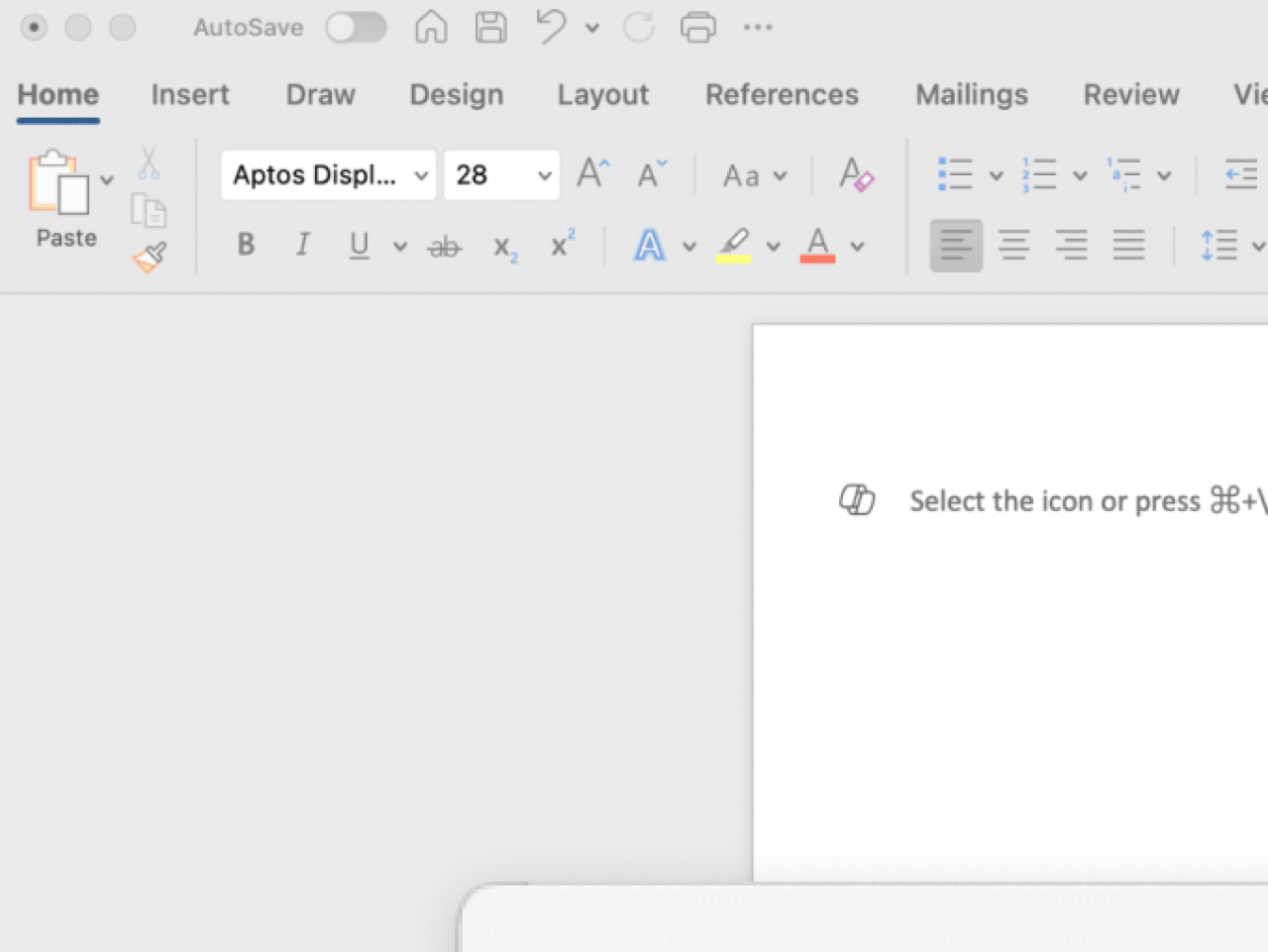
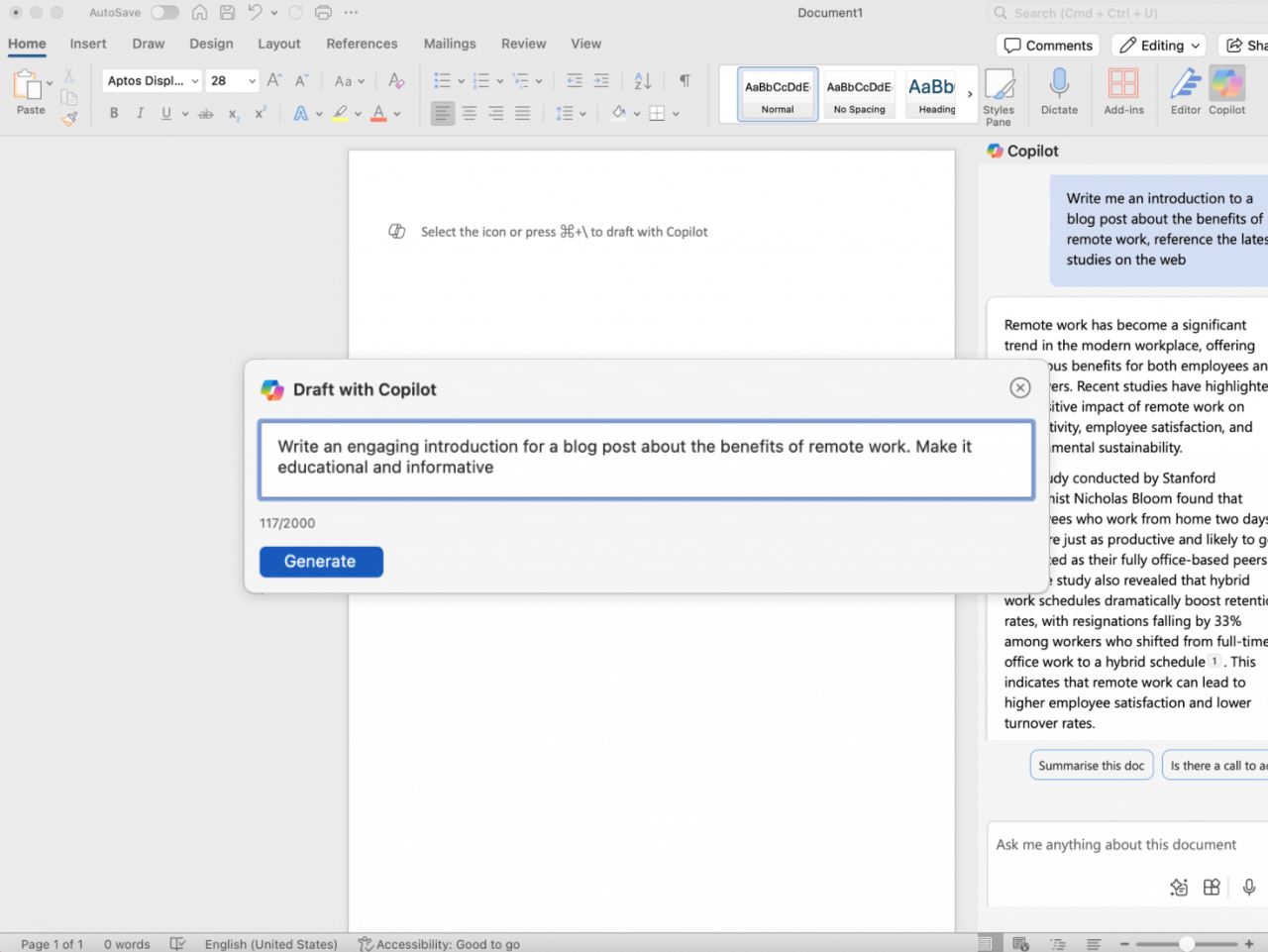
Not everybody wants to learn. Microsoft Office works in an office where you pretend to work until you can finally go home. There is no other app that can make you look so busy and serious doing nothing and saying nothing as PowerPoint. It’s a pro tool for creating bullshit.
For young people who want to learn—not pretend to learn—there are better ways than ChatGPT and Office apps. That’s why, in recent years, at universities, tools like Notion, Craft, or iA Writer have earned quite some popularity. A common trait of these newer apps is that they use Markdown to structure text. Many modern writing tools use Markdown instead of docx, ppt, or xls.
4. Conclusion
Markdown is successful with new apps and a younger audience. This is neither a coincidence nor is it by design. Markdown is subversive. Programmers use and understand Markdown, and they implement it in their apps because they’re familiar with it. It’s ironic how developers shaped a writing app as a clunky design app are now freeing us from the basic design flaw that trapped us for over 40 years. Funny also that Markdown with its slight Apple bias may eventually end Microsoft’s 30 years of reign in formats and formatting.14
Right now, the Empire is busy building its AI Death Star to keep its IT dominance. Markdown plays its role there. Microsoft also has Markdown support in Visual Studio Code and GitHub (which it owns).Other than that, it slowly grows on the surface of a couple of their stranded Star Destroyers. All eyes on AI, they don’t really care that much about Office anymore. AI is so deeply embedded into Windows and Office 365, Microsoft doesn’t really need apps anymore. It could do everything from the Windows search bar. Right now, you still need Office to format what ChatGPT generated, but even that can be done by AI. In a way, you don’t even need a local OS anymore. You could run everything in the cloud and bark sloppy commands at ChatGPT. All these Star Destroyers will eventually strand.
So, ultimately, unless the Office Empire strikes back, the future of digital writing might indeed look more like Markdown than .docx, .ppt15, .epub, or .pdf.
In the mean time, Markdown is being used more and more—without people being fully aware what it really is and what it’s called. Just like the WYSIWYG became ubiquitous without most people knowing what it’s called. We should nevertheless encourage everyone, especially children, to learn it consciously, to extend their know-how beyond headings, bold and italics. Markdown helps us focus on what we want to say instead of how it looks. It gives us more control over our writing—and over the digital tools we use.
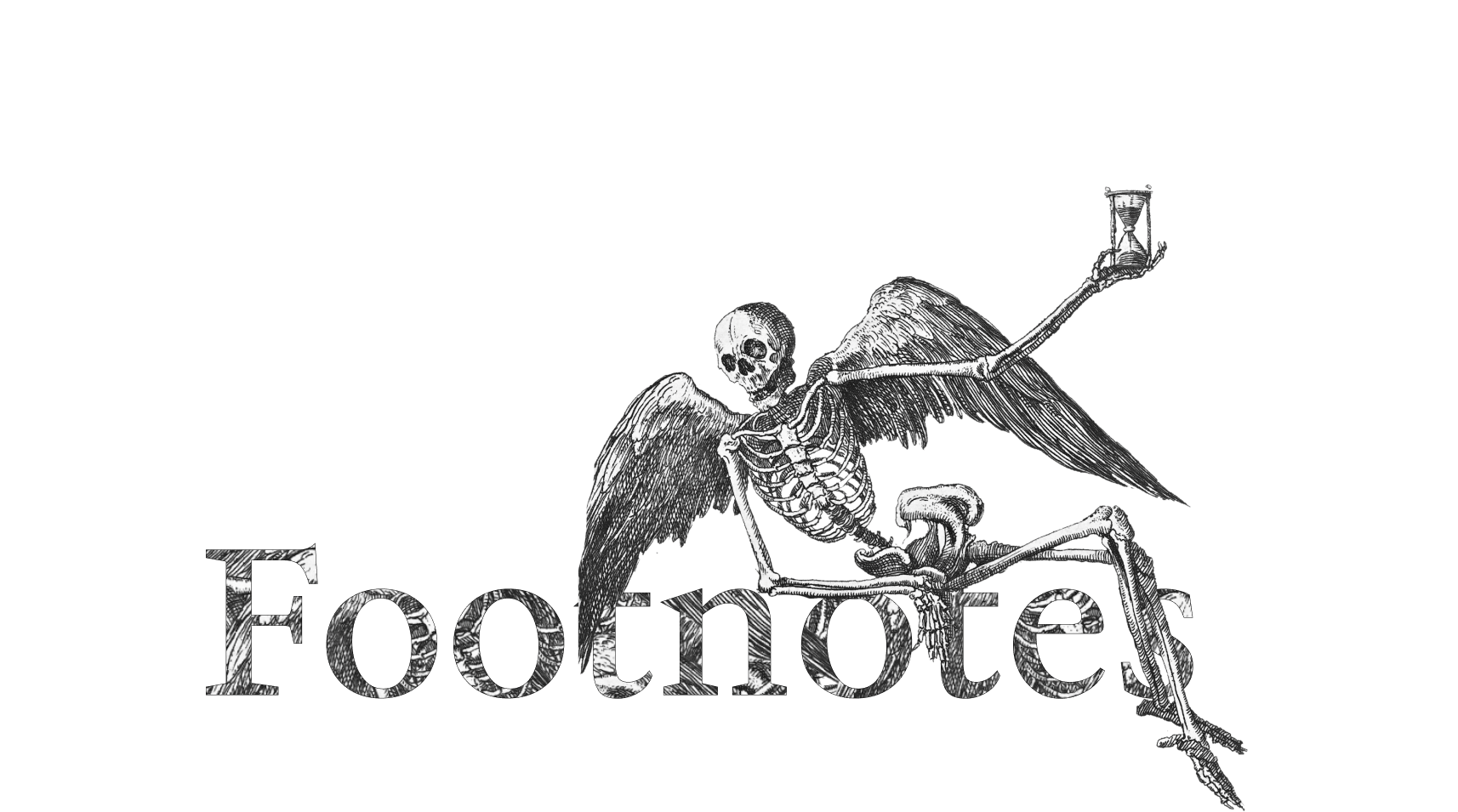
-
The European Commission, among others, pressured Microsoft over its lack of interoperability and abuse of market dominance, particularly in the 2004 and 2008 antitrust cases. In response, Microsoft published more technical details of its formats. They agreed to share interoperability information with competitors and promoted OOXML as an international standard (which was controversial and challenged by advocates of the OpenDocument Format, ODF). The EU even fined Microsoft over €1.6 billion across several cases related to this issue. ↩
-
Source: Daring Fireball, Markdown Syntax: Philosophy ↩
-
There’s a wide spectrum of how Markdown can be used from unaltered plain text to somewhat formatted, to one-way, to jiggle and fully hidden. Fully hidden, Markdown becomes a format. It was designed to work without altering, but previewing italics, bold, and headings, dimming some characters improves the clarity. Using it as a one-way street (allowing input but not editing) is highly debatable. “The jiggle”, showing and hiding it, depending on cursor position is very popular, though it usually leads to a reformatting of the text (especially with images and links) which is unpleasant and distracting. ↩
-
Thank you, O. Palmer for pointing this out. We got this wrong in the first publication. It’s hard to keep track of Microsoft’s gazillion acquisitions. Here are some: Forethought, Inc. (maker of PowerPoint), Consumers Software, Fox Software, Softimage, Altamira Software, NextBase, One Tree Software, RenderMorphics, Network Managers, The Blue Ribbon SoundWorks, Netwise, Bruce Artwick Organization, Vermeer Technologies, VGA-Animation Software Div, Colusa Software, Exos, Aspect Software Engineering, eShop Inc., Electric Gravity, Panorama Software Sys-On-Line, NetCarta, Interse, WebTV Networks, Dimension X, Cooper & Peters, LinkAge Software, VXtreme, Hotmail, Flash Communications, Firefly, MESA Group, Valence Research, LinkExchange, FASA Interactive, CompareNet, Numinous Technologies, Interactive Objects-Digital, Jump Networks, ShadowFactor Software, Omnibrowse, Intrinsa, Sendit, Zoomit, STNC, Softway Systems, Entropic, Visio Corporation, Peach Networks, Travelscape, Titus Communications, Bungie, NetGames, MongoMusic, Pacific Microsonics, Digital Anvil, Vacationspot, Great Plains Software, Intellisol International, Ensemble Studios, NCompass Labs, Maximal Innovative Intelligence, Yupi, Classic Custom Vacations, Sales Management Systems, Navision, Mobilocity, XDegrees, Rare, Vicinity, Connectix, DCG, PlaceWare, G.A. Sullivan, GeCAD Software, 3DO Co-High Heat Baseball, Encore Bus Solutions-IP Asts, ActiveViews, Lookout Software, GIANT Company Software, en’tegrate, Groove Networks, MessageCast, Tsinghua-Shenxun-Cert Asts, Sybari Software, Teleo, FrontBridge Technologies, Alacris, media-streams.com, 5th Finger, UMT-Software and IP Assets, MotionBridge, Seadragon Software, Apptimum, Onfolio, Lionhead Studios, AssetMetrix, Massive Incorporated, Vexcel, DeepMetrix, ProClarity, iView Multimedia, Softricity, Winternals Software, Whale Communications, Gteko, DesktopStandard, Colloquis, Medstory, devBiz Business Solutions, ScreenTonic, Tellme Networks, SoftArtisans, Engyro, Stratature, Savvis Inc-Data Centers, AdECN, aQuantive, Jellyfish.com, Parlano, Global Care Solutions-Assets, HOB Business Solutions, Musiwave, Multimap.com, Calista Technologies, Caligari Corporation, YaData, Rapt, Komoku, 90 Degree Software, Farecast, Danger, Fast Search & Transfer, Kidaro, Quadreon, Navic Networks, Mobicomp, Powerset, DATAllegro, Greenfield Online, 3DV Systems, BigPark, Rosetta Biosoftware, Interactive Supercomputing, Opalis Software, Sentillion, Inc., AVIcode, Inc., Canesta, Inc., Skype Technologies, Prodiance, Twisted Pixel Games, Videosurf, Yammer, Perceptive Pixel, PhoneFactor, StorSimple, MarketingPilot, id8 Group R2 Studios, Pando Networks, MetricsHub, Netbreeze, InRelease, Nokia mobile phones unit, HLW Software, Apiphany, Parature, GreenButton, Capptain, SyntaxTree, InMage, Inception Mobile Inc., Mojang, Aorato, Acompli, HockeyApp, Equivio, Revolution Analytics, Sunrise Atelier, Inc., N-trig, LiveLoop, Datazen Software, Inc., 6 Wunderkinder GmbH, BlueStripe Software, FieldOne Systems LLC, Adallom, Incent Games, LLC, VoloMetrix, Inc., Double Labs, Inc., Adxstudio Inc., Havok, Mobile Data Labs, Inc., Secure Islands Technologies Ltd., Metanautix, Talko, Inc., Teacher Gaming LLC, SwiftKey, Groove, Xamarin, Solair, Wand Labs, Beam, Genee, LinkedIn, Maluuba, Simplygon, Deis, Intentional Software, Hexadite, Cloudyn, Cycle Computing, AltspaceVR, SWNG, Avere Systems, Playfab, Semantic Machines, Ninja Theory, Undead Labs, Compulsion Games, Playground Games, Flipgrid, Bonsai, Lobe, Glint, GitHub, inXile Entertainment, Obsidian Entertainment, XOXCO, FSLogix, Spectrum, Citus Data, DataSense, Express Logic, Double Fine Productions, BlueTalon, PromoteIQ, jClarity, Movere, Mover, Affirmed Networks, Metaswitch Networks, Softomotive, ADRM Software, CyberX Microsoft owns stakesof: Santa Cruz Operation, Dorling Kindersley, Stac Electronics, UUNet, Wang Laboratories, Individual, Mobile Telecom Technologies, Helicon Publishing, SingleTrac, WebTV Networks, VDOnet, CMGI, Digital Anvil, Interse, Comcast, Apple Inc., Progressive Networks, Lernout & Hauspie Speech, E-Stamp, General Magic, WavePhore, Pluto Technologies, Qwest Communications, SkyTel Communications, United Pan-Europe Comm NV, NTL, Banyan, Dialogic, Reciprocal, TV Cabo Portugal SA, Lernout & Hauspie Speech, Inprise, NaviSite, AT&T, Concentric Network, WebMD, Tuttle Decision Systems, Rogers Communications, Korea Thrunet, Globo Cabo, Commtouch Software, Gigamedia, Intertainer, VerticalNet, BroadBand Office, Ecoss, RealNames, MEASAT Broadcast Network, Best Buy, Telewest Communications, Blixer Net, CAIS Internet, Corel Corporation, Chyron Corporation, Audible.com, Sendo, USA Networks, Televisa, ByteTaxi, Facebook, OKWave, Zignals, Toyota Media Service Corp, 24/7, Barnes & Noble, Grab, and Databricks. ↩
-
I clarified the figcaption and this description after thoughtful feedback from Britt Duck on Mastodon. It’s Word for DOS, and it’s important to explicitly mention that this screenshot is showing multiwindow mode. There was, obviously a single window mode, too. ↩
-
Source: Daring Fireball, Things Support for Markdown ↩
-
Word is a wonky layout tool, packed with a million features, but used for writing. PowerPoint is the equivalent for presentations. PowerPoint was not designed to hold captivating, transformational speeches. It’s a collage maker for plastic transparencies. Excel is the shining exception. Excel was made for table calculations and so far the sales company Microsoft hasn’t been able to ruin it. Note: Formatting doesn’t matter much in Excel. It has chart makers and other fancy bells and whistles, but in essence, it’s about the numbers. ↩
-
What about Google Docs? Google Docs is visually modeled after MS Office. It’s data architecture is not primarily designed for focused writing but for collaboration. It doesn’t use a traditional document format either. It uses a protocol that stores every change rather than the text as a whole. You don’t write to a file, you update Firebase. It supports a limited set of Markdown—check its preferences [we didn’t know initially, thanks to @rmaldera, for the hint via Mastodon]. ↩
-
Handwriting is better for 1. Spelling, see: Early spelling acquisition: Writing beats the computer., 2. Memory, see: Comparing Memory for Handwriting versus Typing, 3. Conceptual understanding: The Pen Is Mightier Than the Keyboard: Advantages of Longhand Over Laptop Note Taking. See also The Neuroscience Behind Writing: Handwriting vs. Typing—Who Wins the Battle? ↩
-
Handwriting may boost brain connections more than typing does ↩
-
Does that mean that not just Office but computers in general should be completely abolished in school? No. Kids should learn to write with computers, too. They need to acquire the skill of writing with a keyboard as well. Start with pen and paper. Then teach them a markup language (it doesn’t need to be markdown) that allows them to focus on what they say. ↩
-
For people with ADHD, writing with fewer buttons and menus makes a real difference. It’s not a coincidence that Markdown editors have been a favorite among people living with ADHD. What minimizes distraction for people with attention difficulties improves focus and enjoyment for everyone. ↩
-
Though, in all fairness, without the EU, we’d be all trapped in Microsoft’s formatting prisons. Yeah, John, the EU is in many ways a slow-moving bureaucratic nightmare, but it has its strength and intelligence. And without the EU, your wonderful markup language would have had much less oxygen. ↩
-
We are working hard on making Markdown useful in presentation apps. This is a much bigger stretch, as presentations are seen as mostly a visual matter. We’re working on a second iteration of Presenter. Our first take was technically correct, but we need a bit less technicality to make it work as smoothly as we envisioned. The correct use of Markdown for presentations should feel as obvious as the use of Markdown for regular writing. This will, as all good things, obviously, take time. ↩
